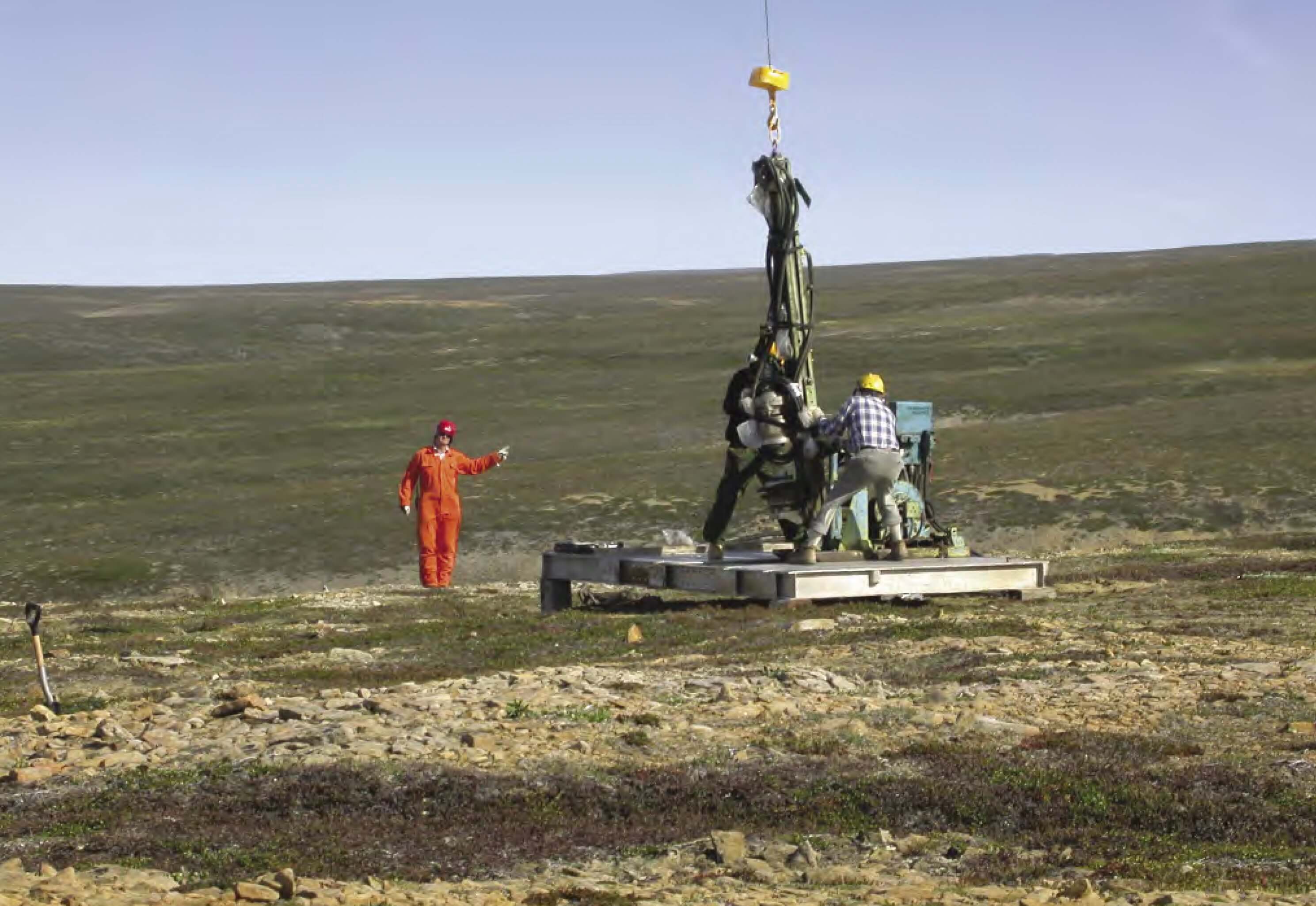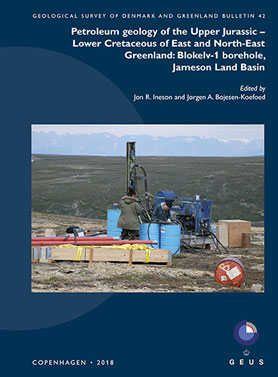
How to Cite
Share
Abstract
The Geological Survey of Denmark and Greenland (GEUS) successfully drilled the fully cored Blokelv-1 borehole in the central part of the Jameson Land Basin in East Greenland, targeting the Upper Jurassic, rich source-rock interval of the Hareelv Formation. The borehole achieved 100% core recovery from 1.72 m to a total depth of 233.8 m; the recovered Hareelv Formation section consists of interlayered black, laminated organic-rich mudstones, massive sandstones and heterolithic sandstone–mudstone intervals of the Katedralen Member, and amalgamated massive sandstones of the Sjællandselv Member. The core is of very high quality and has been subjected to an extensive sampling and analytical programme focused particularly on petroleum geological aspects, as presented in the following eight papers in this volume. This bulletin describes an important, previously poorly documented member of the ‘Kimmeridge Clay’ family of prolific petroleum source rocks in the North Atlantic area.
How to Cite
Share
Copyright (c) 2018 Morten Bjerager, Stefan Piasecki, Jørgen A. Bojesen-Koefoed

This work is licensed under a Creative Commons Attribution 4.0 International License.
Downloads
Editors: Jon R. Ineson and Jørgen A. Bojesen-Koefoed
The exposed Jurassic succession in East and North-East Greenland has long been presented as an analogue for equivalent deeply buried strata on the Norwegian conjugate shelf and offshore North-East Greenland. In particular, the Upper Jurassic marine mudstone succession is often ascribed source-rock potential as [...]









